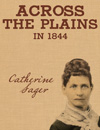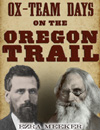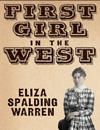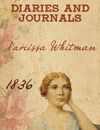Teacher's Guide
BACKGROUND
The Oregon Trail was much more than a pathway to the state of Oregon; it was the only practical corridor to the entire western United States. The places we now know as Washington, Oregon, California, Nevada, Idaho and Utah would probably not be a part of the United States today were it not for the Oregon Trail. That's because the Trail was the only feasible way for settlers to get across the mountains. Without the Trail, most of the American West would likely be a part of Canada or Mexico today.
The journey west on the Oregon Trail was exceptionally difficult by today's standards. One in 10 died along the way; many walked the entire two-thousand miles barefoot. The common misperception is that Native Americans were the emigrant's biggest problem en route. Quite the contrary, most native tribes were quite helpful to the emigrants. The real enemies of the pioneers were cholera, poor sanitation and, surprisingly, accidental gunshots.
The first emigrants to go to Oregon in a covered wagon were Marcus and Narcissa Whitman who made the trip in 1836. But the big wave of western migration did not start until 1843, when about a thousand pioneers made the journey. That 1843 wagon train, dubbed "the great migration" kicked off a massive move west on the Oregon Trail. Over the next 25 years more than a half million people went west on the Trail. Some went all the way to Oregon's Willamette Valley in search of farmland--many more split off for California in search of gold. The glory years of the Oregon Trail finally ended in 1869, when the transcontinental railroad was completed.
Actual wagon ruts from the Oregon Trail still exist today in many parts of the American West; and many groups are working hard to preserve this national historic treasure.
VOCABULARY
Emigrant:
A person who is leaving one country to enter another. Pioneers in the early years of the Oregon Trail were called emigrants because most were leaving the United States to enter the unorganized "Oregon Country." Later, Oregon became a part of the U.S., but the word "emigrant" stuck.
Cholera:
An infectious disease caught by many emigrants on the Oregon Trail. It spread rapidly because of unsanitary water. There was no cure and most died within a day. There is almost no Cholera in the United States today because of better living conditions, but there have been epidemics recently in poor countries.
Manifest Destiny:
Belief that the United States had an innate right to settle the entire West. Most Americans believed the British, the Mexicans and the Indians should be driven out because the United States had the real 'right' to expand to the west.
Pioneer:
An early settler in a new territory. All the people on the Oregon Trail were pioneers, but there were many other pioneers who did not go to Oregon.
Blacksmith:
Worker who shapes heated iron by pounding it with a hammer. Blacksmiths were common on the Oregon Trail because the iron rims of the wagon wheels were often in need of repair.
Ford:
To cross a river on foot or horseback. Often the pioneers forded streams or small rivers. However, many rivers were too deep to ford, so they floated their wagons across or hired a ferry. On rare occasions a toll bridge was available.
Pass:
A gap in a mountain range. Most passes are narrow gorges, but South Pass on the Oregon Trail was a large `saddle' in the mountains--many miles wide.
The West:
Term used to describe the part of the United States that lies beyond the Mississippi River.
"Oregon Country:"
Refers to a large territory that was originally not a part of any other nation. Oregon Country encompassed all of what is now Oregon, Washington, and Idaho; much of British Columbia; and small parts of Wyoming and Montana. Later, Oregon Country was jointly held by Britain and the U.S.; eventually it became a part of the United States.
TOPICS FOR DISCUSSION
List four things in western `trail' movies that you now know are wrong. Examples:
--Circled wagon trains fighting Indians: It never happened
--Pioneer wagons pulled by horses: They preferred mules or oxen
--Entire families riding inside the wagons: Most walked
--Perfect makeup and hair: Most never bathed on the entire trip.
Imagine for a moment that you are going on a 4 month trip in your family van. You will be traveling through a remote wilderness and there will be no place to stop for food or supplies. What would you take along? Make a list. How is your list different or similar to the Oregon Trail pioneers.'
In many parts of the West the actual Oregon Trail ruts still exist. Some people want to preserve these historic markings on the land; but some of the landowners say it is their right to build roads or homes right on top of the trail and wipe it out. Which side do you agree with? Should landowners be able to do what they want with their land; or should the government require them to preserve the Trail?
If the Oregon Trail had never existed, the states of Oregon, Washington and Idaho would probably be a part of Canada today. California, Nevada, Utah and Arizona might have ended up in Mexico. How would life in America be different? How would your life be different?
Imagine that you are to travel back in time to become an Oregon Trail pioneer. You are allowed to take along one modern invention; something that will fit in your pocket. What would you take? Why?
What was the longest camping trip you ever went on? What would it be like to go on a six-month camping trip?
ACTIVITIES
1. Try having a typical `trail meal' for lunch: dried bread, bacon and cold beans . Now imagine having that same menu for every breakfast, lunch and dinner for weeks. What would it be like?
(If you would like to make your own trail bread, mix flour with a small amount of baking soda and then add water until you get a firm dough. To simulate cooking over a fire, cook your bread on a stovetop. If it turns out doughy on the inside or burned on the outside, don't worry--that's how it turned out for most of the emigrants too!)
2.Figure out how many steps it took for an emigrant to walk to Oregon. First, measure one of your normal steps from front heel to back heel. How many inches is it? Next, divide 63360 (the number of inches in a mile) by that number. Now you have figured the number of steps in a mile. Now, multiply the number of steps by 2,000 miles--the distance to Oregon. The answer is the number of steps it would take for you to walk from Missouri to Oregon.
3.Find the east and west end of the Oregon Trail on a modern-day map. First find Independence, Missouri (it's near Kansas City), then Oregon City, Oregon (it's near Portland). What roads would you take today to get from Independence to Oregon City. Are those roads close to the old Oregon Trail?
4.To understand what life was like for the pioneers, try going through an evening without any modern conveniences. No electric lights, ball point pens, or TV etc.. Make a complete list of all the things you gave up. (You might make an exception for bathrooms!)
TEST QUESTIONS
1. Who were the first white explorers to cross the American continent?
Stanley and Livingston
B. Lewis and Clark
C. Astor and Stuart
D. Fremont and Carson
2.Who were the first emigrants to travel to Oregon Country in a wagon?
A. The Whitmans
B. The Astorians
C. The Johnsons
D. The Donner Party
3. Which was the only feasible passage through the Rockies for emigrant wagons?
A. Independence Valley
B. Emigrant Canyon
C. The Lander Road
D. South Pass
4. Which of the following was most commonly used to power emigrant wagons.
A. Horses
B. Oxen
C. Crude steam engines
D. All of the above were used about equally
5. Why did many emigrants walk the entire distance?
A. Punishment for a crime they had committed
B. Because they could not afford a wagon
C. Because there was no room in the overloaded wagons
D. Because they wanted to get exercise.
6. When there was no wood for campfires, what fuel did the emigrants normally use?
A. Fuel oil
B. Kerosene
C. Peat moss
D. Buffalo dung
7. Which river did the emigrants NOT follow on the Oregon Trail?
A. Colorado
B. Columbia
C. Platte
D. Snake
8. In the years just before emigrants started going west, most Americans thought the Great Plains area was:
A. A vast desert
B. A lush, fertile prairie
C. A dense forest
D. Gold-mining country
9. Most of the interaction between emigrants and Indians was:
A. Large-scale battles
B. Guerilla-type attacks
C. Simple barter
D. There was no interaction; the Indians were all on reservations.
10. Which of the following was NOT a fort on the Oregon Trail?
A. Ft. Laramie
B. Ft. Vancouver
C. Ft Kearny
D. Ft. Lincoln
11. What was the most common deadly disease on the Oregon Trail?
A. Smallpox
B. Cholera
C. Influenza
D. Pneumonia
12. Who led the Mormons west along the Oregon Trail?
A. Joseph Smith
B. John Richard
C. Brigham Young
D. Angus Stansbury
13. "Oregon Country" included the places we now know as:
A. California, Oregon and Washington
B. Oregon, Nevada and Idaho
C. Oregon, Washington and Nevada
D. Oregon, Washington and Idaho
14. The final goal for most of the Oregon-bound pioneers was to reach:
A. The Willamette Valley
B. South Pass
C. Portland, Oregon
D. Ft. Boise
15. Who were the `49ers?
A. California-bound emigrants looking for farmland
B. Gold prospectors who began going west in 1849
C. Bored emigrants who invented a sport using a pig skin.
D. Famous group of older emigrants; all over the age of 49.
16. What was the most common alternative to floating a wagon down the treacherous Columbia River?
A. Paying a toll to use the Barlow Road
B. Abandoning the wagon and pushing ahead on foot through the dense forest.
C. Turning around and going back home
D. All of the above were common alternatives
17. Who was called "The Father of Oregon."
A. John Jacob Astor
B. John Fremont
C. John W. Booth
D. John McLoughlin
18. About how long was the Oregon Trail?
A. 300 miles
B. 1000 miles
C. 1300 miles
D. 2000 miles
19. Most of the Oregon-bound travelers were:
A. Single men
B. Elderly men and women
C. Families
D. Government workers
20. About how many emigrants went west on the Oregon Trail?
A. 500
B. 10,000
C. 25,000
D. Over 100,000




